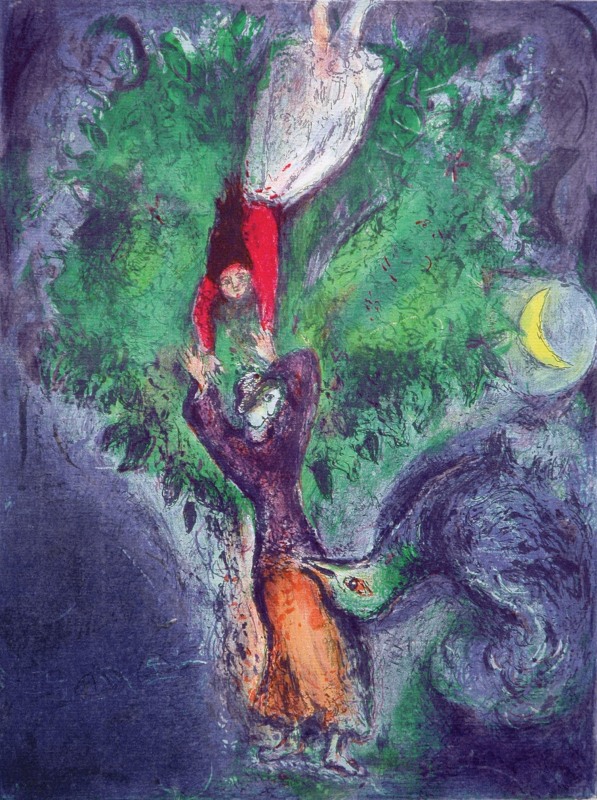
Marc Chagall (1887-1985)
Marc Chagall was born on July 7, 1887 in Vitsyebsk, Russia. He was trained and educated in art in St. Petersburg and spent a considerable time studying and working in Paris. After the Russian Revolution he was director of the Art Academy in Vitsyebsk and was the art director of the Moscow Jewish State Theater. Chagall painted several murals in the theater lobby and executed the settings for numerous theater productions. Thereafter he returned to Paris and during World War II, he fled to the United States. The Museum of Modern Art, New York held a retrospective of his works in 1946. He ultimately settled permanently in France in 1948.
Chagall is distinguished for his surrealistic inventiveness. He is recognized as one of the most significant painters and graphic artists of the twentieth century. His personal and unique imagery is often suffused with exquisite poetic inspiration. His distinctive use of color and form is derived partly from Russian expressionism and was influenced decisively by French Cubism. His numerous works represent characteristically vivid recollections of Russian-Jewish village scenes, as in I and the Village (1911, Museum of Modern Art, New York City), and incidents in his private life, as in the print series Mein Leben (German for "My Life,"1922), in addition to treatments of Jewish subjects, of which The Praying Jew (1914, Art Institute of Chicago) is one.
Chagall’s works combine recollection with folklore and fantasy. In the late 1920s to 1939, he created a series of etchings illustrating biblical themes from the Old Testament, as well as the 12 stained-glass windows in the Hadassah Hospital of the Hadassah-Hebrew University Medical Center in Jerusalem. In 1973 Musée National Message Biblique Marc Chagall was opened in Nice, France, to house hundreds of his biblical works. Chagall created many prints that illustrated literary classics. His canvas covers the ceiling of the Opéra in Paris, and two large murals hang in the lobby of the Metropolitan Opera House in New York City. An exhibition of the artist’s work from was held at the Musée du Louvre, Paris, and another major retrospective was held at the Philadelphia Museum of Art in 1985.
Chagall died March 28, 1985, in Saint-Paul-de-Vence, France. His works are held in the permanent collections of virtually every museum of modern art including, The Art Institute of Chicago, The Solomon R. Guggenheim, the Hermitage Museum, St. Petersburg, The Metropolitan Museum of Art, The Museum of Modern Art, New York, and the San Francisco Museum of Modern Art.
